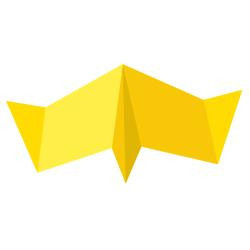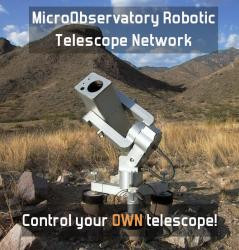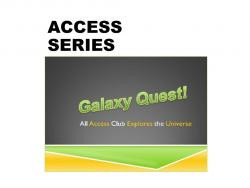Jessica Radovich's collections
AFRICAN COSMOS
<p></p>
<p>Put the ARTS in STEM - From Egypt to South Africa, take a brief tour of the <strong><em>African Cosmos </em></strong> and have your students discover the intersection of Art and Astronomy in the southern hemisphere. Explore constellations only seen on the African continent. See why the Goliath beetle became a symbol of rebirth for the Egyptian scarab. Learn about celestial navigation by people and animals. <br /></p>
<p> Create Your Own Constellation! Request Activity sheets for your classroom. <br /></p>
<p> Submit your class constellations to our Student Gallery and be a part of your own school's online exhibition!</p>
<p></p>
<p><br /></p>
 Jessica Radovich
Jessica Radovich
73
Journey through an Exploded Star: An Online Interactive
<p>In this collection, students will explore the life cycle of stars and learn about the connection between elements and space. They'll explore real data that provides evidence for the dispersal of several elements produced by the explosion of massive stars, specifically through the Cassiopeia A supernova. Then they’ll put their knowledge into practice by navigating the remains of the supernova in the online interactive “Journey through an Exploded Star.”<br /></p>
<ol><li>The activity begins with “DISCOVER." The students will go through a series of slides, learning first how the visible spectrum of light is only a small part of the entire electromagnetic spectrum, about the different telescopes scientists use to view the electromagnetic radiation across that spectrum, and finally how they've used that data to form a composite view of our universe, specifically through a 3D model of the Cassiopeia A supernova.</li><li>In the "EXPLORE" activity, students examine the 3D visualization of data, compiled by astrophysicist Tracey DeLaney, to understand how and why scientists study supernovas such as Cassiopeia A: to gain a comprehensive picture of the cosmos.</li><li>The “PLAY” online interactive then takes the students on a first-person flight through the center of this exploded star. The interactive is split into two parts: The first part is a 2 minute guided fly-through, where Kim Arcand, project lead of the original 3D visualization found in the collection, explains the different forms of light and the elements that are traceable under those spectrums. The second is a free explore option, where students are able to manipulate the different spectrums by adjusting filters as they choose. Both parts of the interactive reinforce what they’ve previously learned within the collection about light across the EMS. This interactive works across browsers and requires no software downloads. Also included is a 360 video tour that works on mobile devices and Google Cardboard.</li><li>Finally, three extension activities are included. The first allows students to take photographs using real MicroObservatory robotic telescopes located at Smithsonian Observatory sites in Cambridge, Massachusetts and Amado, Arizona to create their very own authentic astrophotographs. They’ll use specialized image processing software to bring out visual details from images of objects like the Moon, Sun, star clusters, nebulas, and galaxies. The second, "Recoloring the Universe," is a suite of resources that use astrophysical data to teach basic coding. The third resource, "How to Be a Scientist: Careers in Astronomy" highlights the career and data visualization work of astronomer Kimberly Arcand. </li></ol><p>This online activity could be used to augment study about the forms of radiation light can take, learning about supernovae and what happens after a star explodes, as well as learning about some of the different careers in science that are available (astrophysicists, astrophotographers, engineers, and visualization experts). As with all Learning Lab collections, it is built to be freely modified and adapted to fit your specific needs. </p>
 Jessica Radovich
Jessica Radovich
22
MicroObservatory: A guide to Observing the Universe
<p><strong>MicroObservatory is a network of automated telescopes that can be controlled over the Internet.<strong></strong><strong> In this collection, students will learn </strong><strong>how they can control these telescopes themselves, u<strong>sing many of the same technologies that NASA uses to capture astronomical images by controlling telescopes in space</strong>.</strong></strong><strong> After gathering their very own images of space, students will learn the steps professional astronomers take to process the astronomical masterpieces so often seen from NASA, and then have the opportunity to create their very own!</strong></p>
 Jessica Radovich
Jessica Radovich
6




